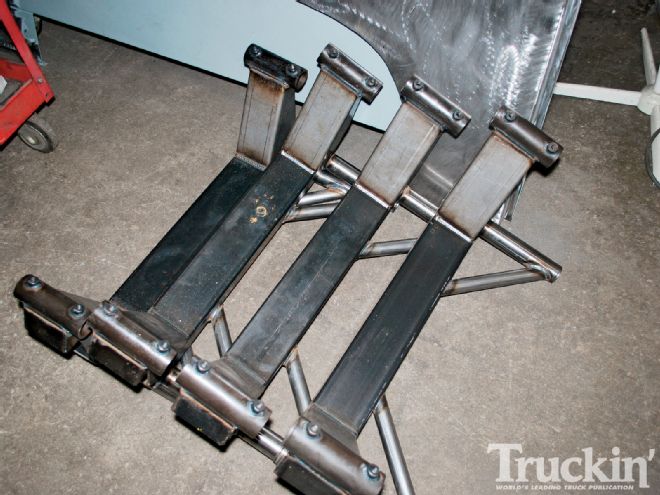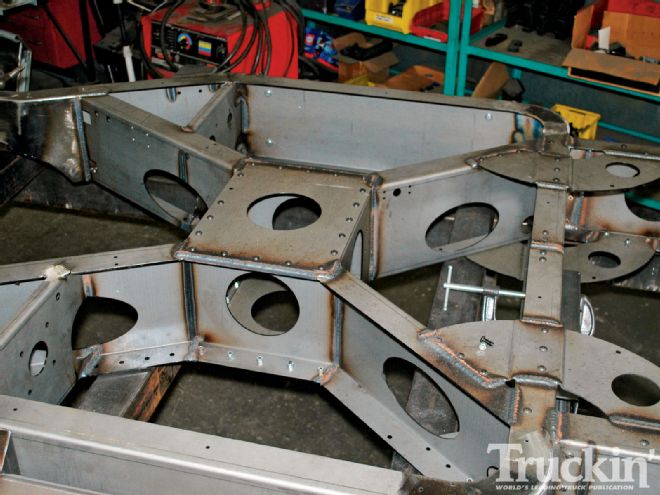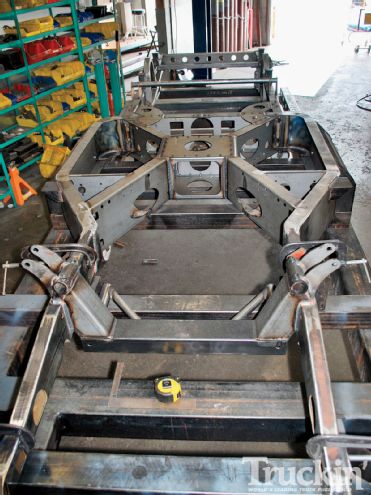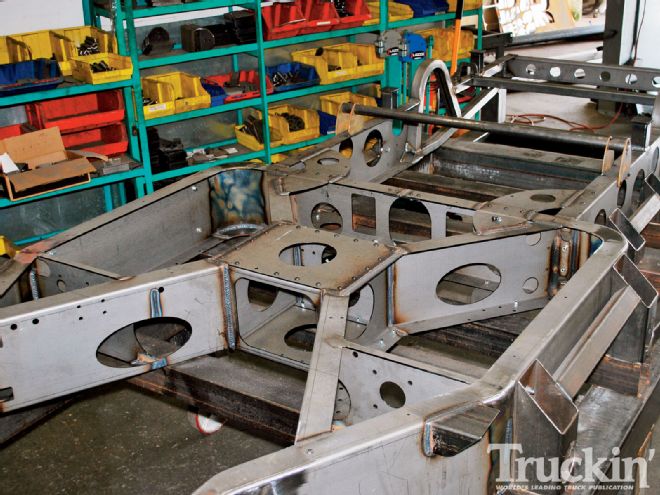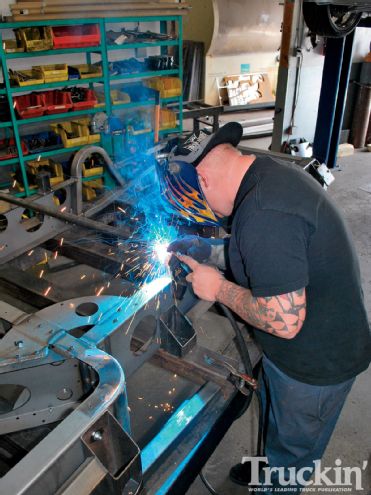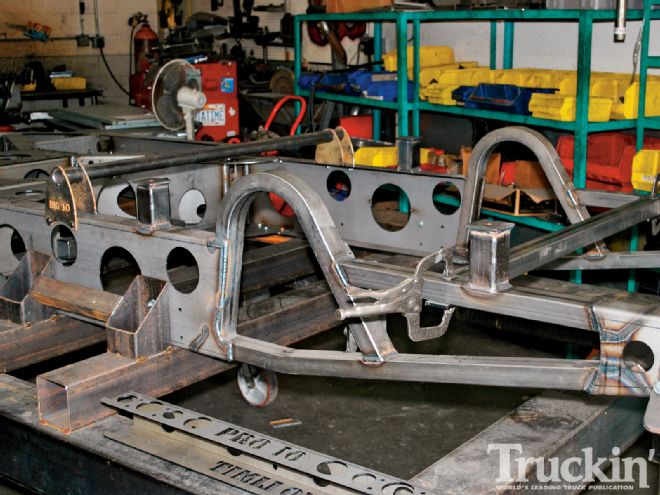What do you do when a successful road racer like Boris Said and a chassis engineer, Rob Macgregor, get together to build a truck? That's the story behind No Limit Engineering's new BIG 10 Chassis.

| 1956 Ford F 100 right Angle
You say that you don't know who Boris Said is? Well, he's better known as the "road course ringer" to his NASCAR Sprint Cup competitors, with SCCA wins at the 24 hours of Daytona, the 12 hours of Sebring, and many NASCAR Truck series wins. He really knows what it takes to drive anything hard and fast. The same goes for Rob Macgregor. A newbie by no means, Rob has been "El Jefe" at No Limit Engineering for more than 25 years designing, building, and torturing classic pickups every day.
When Boris decided to build a '56 Ford F-100 for himself, they sat down to hammer out the details of what would be required to make a truck really work, something that is fast enough to take on a sports car, strong enough to dish out a butt whooping, and comfortable on the highway during long haul cruises to the track, or a coffee shop run down by the coast.
With a clean sheet of paper, the guys set out to cure some of the common problems owners face when attempting to "modernize" a classic pickup. Trucks are known for ill handling, poor brake performance, and horrible steering woes. To their credit, classic trucks were designed as "tractors with doors" and never meant to out-corner a sports car.
The answer is what you see in front of you. The first thing you see when looking at the BIG 10 is the size of everything. Engineered in sections, the weight is now properly placed towards the center of the truck, where it's needed most. In doing so, this balances the weight of the vehicle disbursing load over both axles rather than having a "light" rear end. The name itself comes from the size of the center section of the chassis, a full 10-inch-tall framerail is designed from channel and not box tubing. To cure the "flex," a massive X-member was engineered into the center section.
Out back, the theme of re-routing weight to the center of the chassis is easy to spot. The axle travels through the frame rather than under the frame, again, transferring weight back to where it's most needed. The same goes for the front section. Utilizing the Wide Ride IFS from No Limit's "Pro Tech" chassis, improvements were made in weight transfer during heavy G loads while pushing the truck through the paces. All of this has been achieved maintaining the stock wheelbase requirements and engine/transmission mount locations, ensuring that the truck's sheetmetal and factory items do not need modifications.
Now I know what you're thinking, "Does it fit under my truck, and how heavy is it?" Surprise, it's available for Ford F-1, F-100 through 1956, Chevy 1/2-ton pickups '47 through '59 and is engineered to fit under both Ford and Chevy applications without modifications, and will sit lower than any stock chassis. Further, the channel design of the frame doesn't add any more weight than a stock chassis. Even better, the components that are required to build a chassis are computer documented, and manufactured for the home hobbyist to install using handtools and a drill motor. This is a zero-fab chassis!
